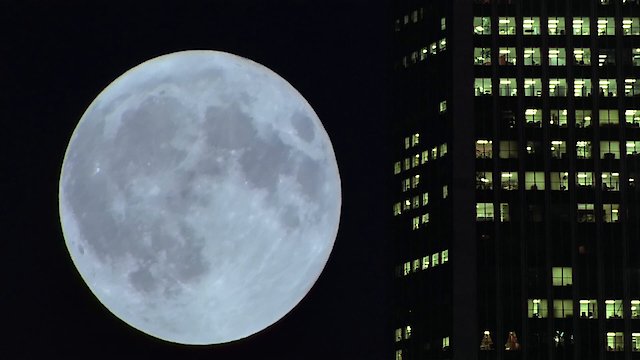
Koyaanisqatsi
Where to Watch Koyaanisqatsi

Koyaanisqatsi, released in 1982, is a groundbreaking film that defies conventional narrative structure, instead immersing viewers in a mesmerizing visual and auditory experience. Directed by Godfrey Reggio and featuring a haunting score by composer Philip Glass, the film explores the complex relationship between humanity, nature, and technology through a series of stunning cinematographic vignettes.
The title Koyaanisqatsi comes from the Hopi language, roughly translating to "life out of balance." This concept serves as the thematic backbone of the film, which examines the rapid transformation of the natural world into an increasingly urbanized and industrialized environment. With no dialogue or traditional plot, the film relies solely on powerful imagery and Glass's minimalist, repetitive music to evoke emotions and provoke thought.
The visual journey begins with breathtaking shots of the American landscape—from the vastness of deserts to majestic mountains—juxtaposed with stark images of urban life and technological advancement. The cinematography, captured by director of photography Ron Fricke, employs a range of techniques, including time-lapse photography, slow motion, and sweeping aerial views, to create a captivating visual tapestry. These stunning visuals invite viewers to reflect on the beauty of the natural world while simultaneously revealing the encroachment of human civilization.
Throughout its runtime, Koyaanisqatsi conveys a profound sense of urgency regarding the environmental and societal implications of unchecked modernization. The film contrasts serene scenes of nature with images depicting the frenetic pace of city life and the mechanization of labor. Viewers are presented with striking visuals of busy streets, crowded airports, and factories, moments that highlight the disconnect between human existence and the natural rhythms of life.
The score by Philip Glass plays an essential role in shaping the film's emotional landscape. His music, characterized by repetitive motifs and a hypnotic, pulsating rhythm, enhances the visual experience and guides the viewer through the film's progression. The soundtrack shifts seamlessly from meditative and tranquil passages to more intense and frenetic segments, mirroring the ebb and flow of the imagery on screen. The combination of sound and image creates an immersive experience that compels viewers to ponder the film's themes of chaos, transformation, and the search for balance in an increasingly complicated world.
Koyaanisqatsi is punctuated by thematic elements that invite contemplation on humanity's place in the natural order. As the film progresses, it raises questions about consumption, progress, and the cost of our technological advancements. The contrast between the serene beauty of untouched landscapes and the harshness of urban sprawl underscores the potential consequences of modern life. Reggio's intention is not to provide answers but to provoke questions, prompting audiences to reflect on their relationship with the world.
The film's pacing varies dramatically, with moments of breathtaking stillness followed by rapid sequences that convey a sense of urgency and overwhelm. This dynamic flow keeps viewers engaged while challenging them to confront the implications of the imagery being presented. The stark juxtaposition of tranquil nature scenes against the clamor and chaos of modern life serves to amplify the central theme of imbalance.
Koyaanisqatsi is not merely a film; it is an experience designed to invoke existential reflection. Its lack of spoken dialogue encourages a meditative state, allowing audiences to absorb the visual poetry and the haunting score deeply. Each sequence invites personal interpretation, making it a unique viewing experience that resonates differently with each individual.
The film has become a cult classic and a landmark in experimental cinema, influencing a wide range of filmmakers and artists. Its exploration of philosophical themes and its unique approach to storytelling have made Koyaanisqatsi a touchstone for discussions about environmental sustainability, the impact of technology, and the human condition. It stands as a provocative visual essay that remains relevant in today's rapidly changing world.
In summary, Koyaanisqatsi is a visually stunning and thematically rich film that challenges viewers to consider the implications of modern life. It invites deep reflection on the delicate balance between nature and technology, prompting questions about existence and sustainability. Through its innovative use of cinematography and music, the film transcends traditional filmmaking, creating a powerful, experiential journey that resonates with audiences long after the credits roll. Koyaanisqatsi is not just watched; it is felt, urging viewers to contemplate their place within the intricate tapestry of life.
Koyaanisqatsi is a Documentary, Music movie released in 1982. It has a runtime of 87 minutes Critics and viewers have rated it mostly positive reviews, with an IMDb score of 8.2. It also holds a MetaScore of 72.
How to Watch Koyaanisqatsi
Where can I stream Koyaanisqatsi movie online? Koyaanisqatsi is available to watch and stream, buy on demand, download at Prime Video, Prime Video, Tubi TV, Apple TV Store, Amazon, Amazon, Kanopy, Google Play, YouTube VOD, Fandango at Home. Some platforms allow you to rent Koyaanisqatsi for a limited time or purchase the movie for downloading.
